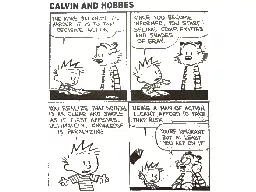PPT-How is getting dressed in the morning a social activity?
Author : briana-ranney | Published Date : 2017-11-12
Three Theoretical Paradigms Structural Functionalism Society is viewed as composed of various parts each with a function that when fulfilled contributes to societys
Presentation Embed Code
Download Presentation
Download Presentation The PPT/PDF document "How is getting dressed in the morning a ..." is the property of its rightful owner. Permission is granted to download and print the materials on this website for personal, non-commercial use only, and to display it on your personal computer provided you do not modify the materials and that you retain all copyright notices contained in the materials. By downloading content from our website, you accept the terms of this agreement.
How is getting dressed in the morning a social activity?: Transcript
Download Rules Of Document
"How is getting dressed in the morning a social activity?"The content belongs to its owner. You may download and print it for personal use, without modification, and keep all copyright notices. By downloading, you agree to these terms.
Related Documents














